I slept on this budget Dreams mattress for a month – at £179 for a double, I think it combines comfort and affordability
Our Dreams Workshop Follows Traditional Spring Mattress review puts this affordable mattress to the test to see if you can really get comfort at a low price (*spoiler alert* it seems that you can)
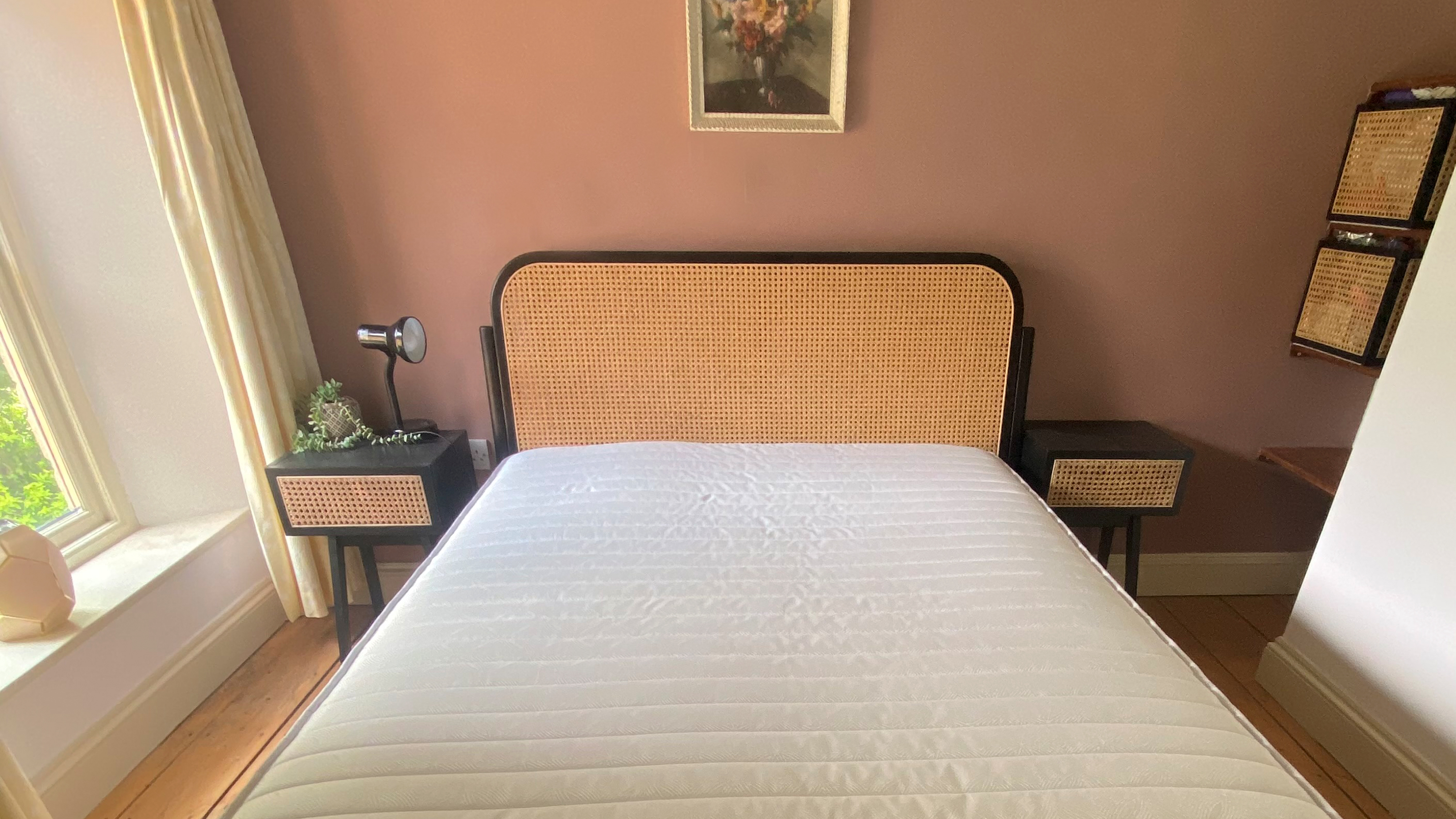
This budget-friendly open coil mattress may be fairly basic in construction, but our reviewer found it still offers a comfortable night's sleep for an affordable price point.
-
+
Affordable
-
+
Comfortable for back and side sleepers
-
+
Breathable
-
-
Some motion transfer
-
-
Lack of edge support
-
-
Only 18cm deep
-
-
No handles for moving/rotating
Why you can trust Ideal Home

Our Dreams Workshop Follows Traditional Spring Mattress review puts this affordable sleep surface to the test to see how it performs compared to some of the best mattresses on the market.
A third of our life is spent sleeping, so it's perhaps no wonder that the mattress market is big business, with many mattresses easily costing between £1,000 and £2,000. What makes the Dreams Workshop Follows Traditional Spring Mattress different is that it aims to combine comfort with value. A double Follows mattress will cost you just £179, as of writing.
Dreams has been trading since 1985, and manufacturing own-brand mattresses from its British factory, based in Oldbury, since 2006. The Follows mattress is a traditional open spring mattress and I was eager to find out what sort of comfort levels I could expect from this budget design.
As such, I put it through Ideal Home's mattress testing process to see how it performed; sleeping on it for a month to assess comfort, support, breathability, motion isolation, and edge support. Here's what I found.
Dreams Workshop Follows Traditional Spring Mattress review
Specifications
- Type: Open spring - hourglass Bonnell springs to be precise!
- Construction materials: Open springs, polyester comfort layer
- Number of springs: 288
- Memory foam: No
- Sizes: Small single, single, double, and king
- Comfort level: It’s marketed as firm comfort, we would say it’s medium-firm
- Height: 18cm
- Side handles: No
- Flip or rotate: Rotate - weekly for the first three months, then every month thereafter
- Manufacturer sleep trial: As of writing, Dreams offers a 'Comfort Exchange' policy. This allows customers to trial a mattress and exchange it if they don't find it comfortable. The policy typically allows for an exchange within 100 nights of the original delivery date – terms and conditions can be found here.
How I tested

I’m Rachel, a 44-year old mother and freelance reviewer who helps the Ideal Home team put all manner of products through their paces to find the top recommendations for our readers. For this review, I tested the Dreams Workshop Follows Traditional Spring Mattress in a double size on a traditional slatted bed base.
My sleep stats:
- Sleep position: back or side
- Tension preference: firm
- Sleep problems: lower back pain and/or neck pain and occasional overheating
- Height & weight: 5"5 and 9.5 stones
Delivery
On mattress delivery day, the two-person Dreams delivery team were absolutely wonderful. Not only did they carry the mattress around the corner to my house (I was worried their van would struggle to negotiate the tight bend) but they also manoeuvred it up my stairs and into the room of my choice with ease.
I didn’t need a mattress disposed of, but if you're wondering how to get rid of your old mattress then Dreams offers a mattress recycling service. As part of the brand's zero to landfill policy, this means that they ensure no part of your old mattress goes to waste. There is a small charge for this service, with prices starting at £20 for a single mattress disposal. However, this is comparable to the cost of recycling a mattress with other service providers.
Sign up to our newsletter for style inspiration, real homes, project and garden advice and shopping know-how
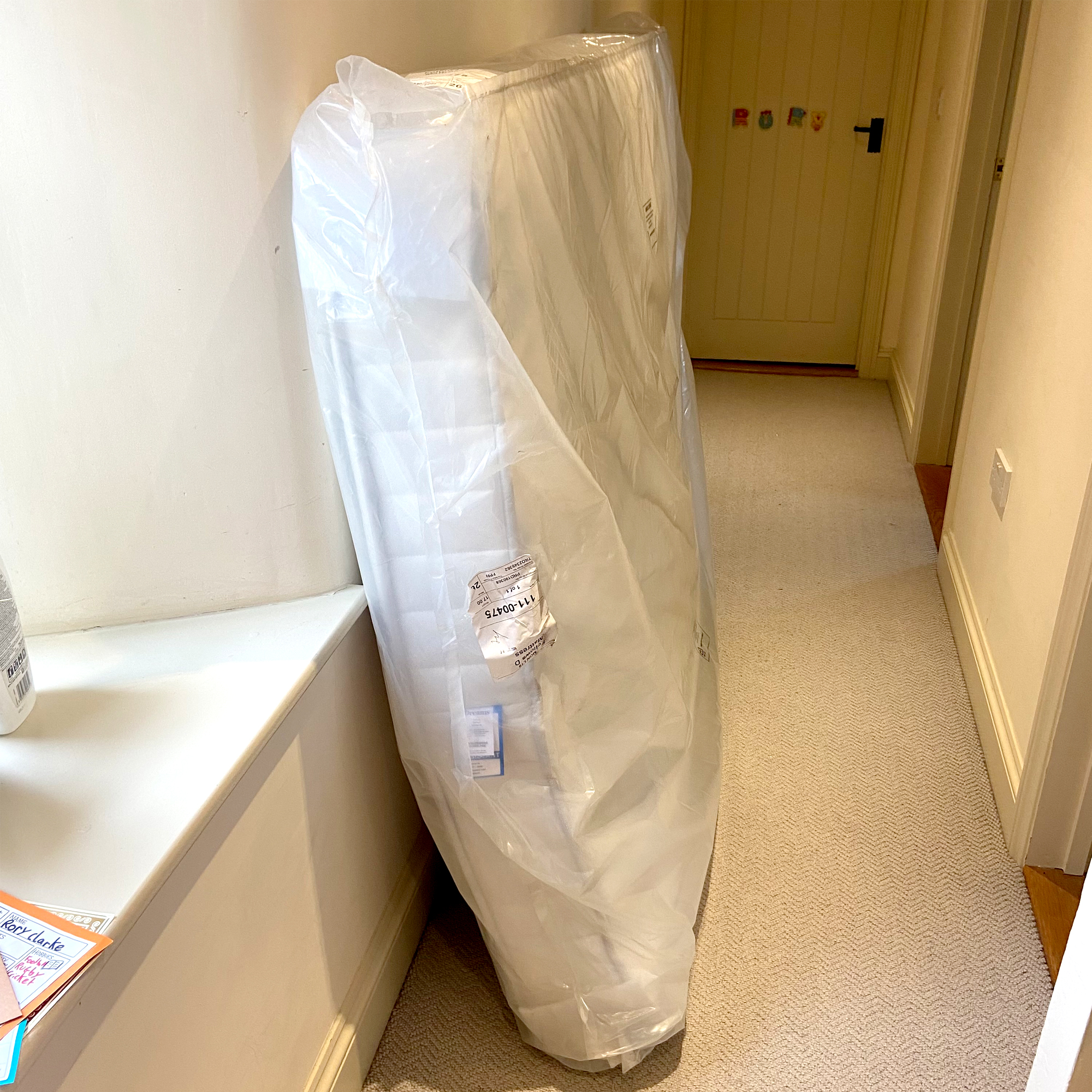
Unboxing
The mattress arrived flat and packaged in a thick polythene bag. Although the polythene bag isn’t sustainable, I’ve reused it for storing things in the garage so it came in handy and won’t be sent to landfill!
Thankfully, when the polythene was removed, this mattress didn't smell as strongly as some mattresses I’ve previously owned, although Dreams still advise leaving the mattress to air for a few hours before putting it on the bed to allow any odour to dissipate. Presumably the fact it didn’t smell much was the fact that ‘off-gassing’ is more common with memory foam mattresses, which this is not.
Unfortunately the mattress doesn’t have side handles to help with lifting it onto the bed – perhaps a cost-saving measure to enable that low price point – which made it a bit tricky to move.
However, at just 18cm deep, and without any weighty memory foam layers on top, this mattress isn’t as heavy as some. I still managed to manoeuvre it onto the bed with relative ease, although the lack of handles may be a consideration for anyone who isn’t as strong as me or has mobility issues.
The lack of handles also makes rotating the mattress every month (as advised by Dreams) to ensure even wear and tear a little more cumbersome.
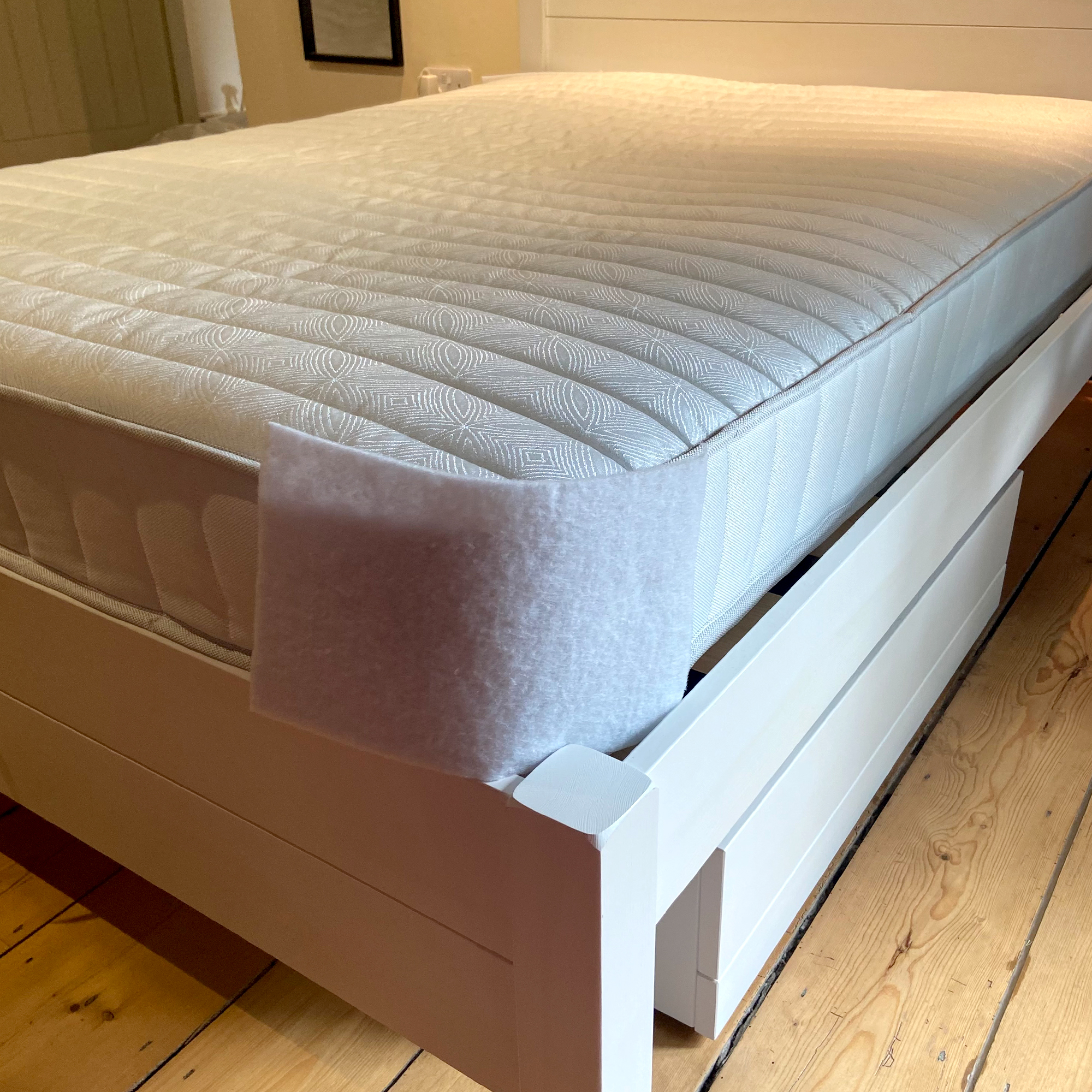
Construction
Overall, the construction of the Dreams Workshop Follows Traditional Spring Mattress is pretty simple.
This single sided mattress is made up of a base layer of fabric, a layer of insulation, and then an open coil layer of 288 hourglass-shaped Bonnell springs. The springs are then topped by another insulating layer, a double layer of polyester as the comfort layer, and a fabric cover.
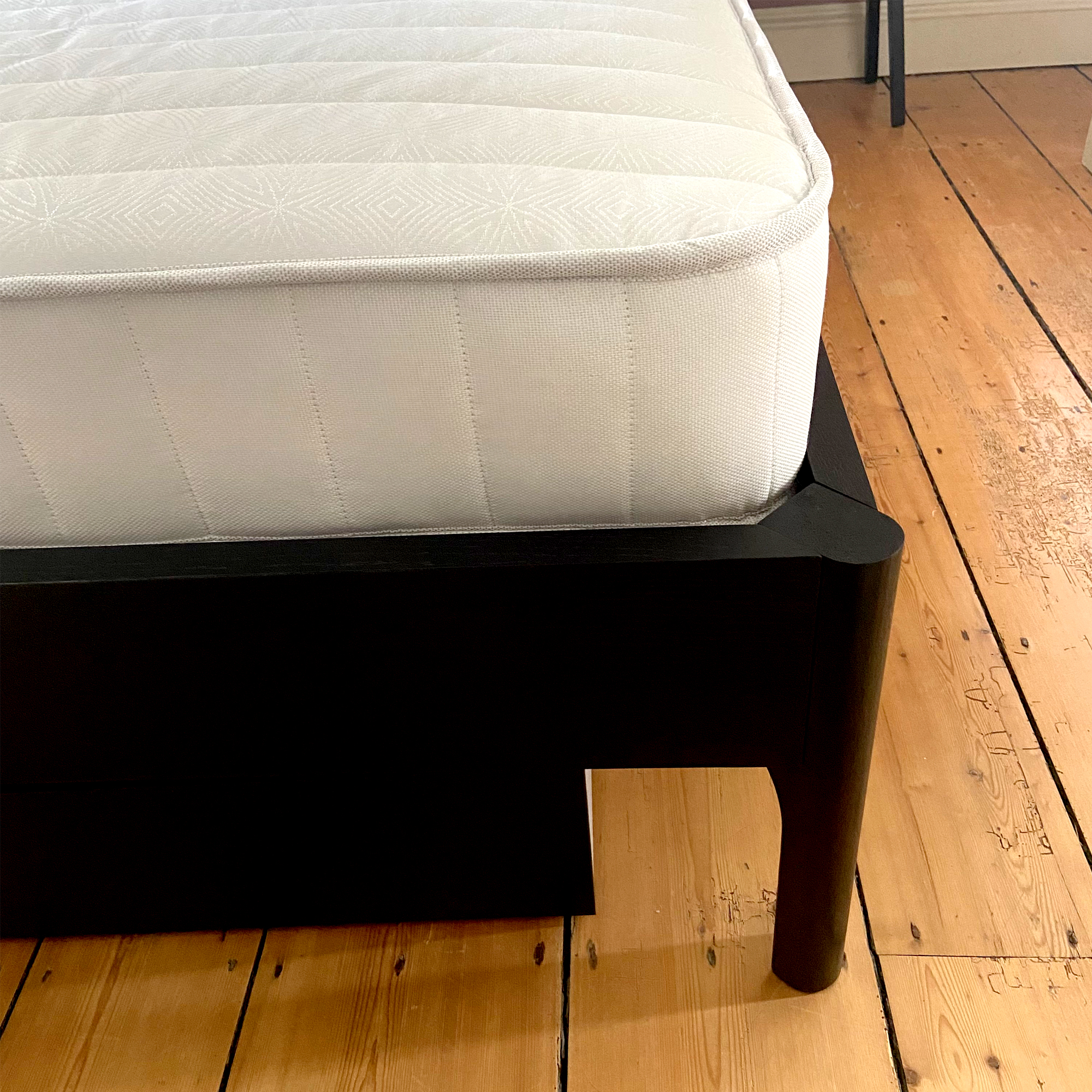
Comfort
I suffer from tight shoulders from hunching over at a laptop all day which often results in a stiff neck, and also sometimes experience lower back and hip pain and occasional overheating at night.
I usually sleep on a memory foam mattress, so I was eager to try out this firmer sprung mattress to see if it did a better job of eliminating my usual aches and pains and if it could prevent night-time overheating.
Knowing its construction and price point, if I’m honest, I wasn’t expecting much from this mattress. However, once I began sleeping on the Dreams Workshop Follows Traditional Spring Mattress, I was quickly proved wrong.
As someone who prefers the support of a firm mattress – my current favourite being the latex-topped Sealy Newton Posturepedic Mattress I recently reviewed – the Follows Traditional Spring Mattress isn’t quite as firm as I would like, but, it is still reasonably firm. I would rate it a medium tension, all in all.
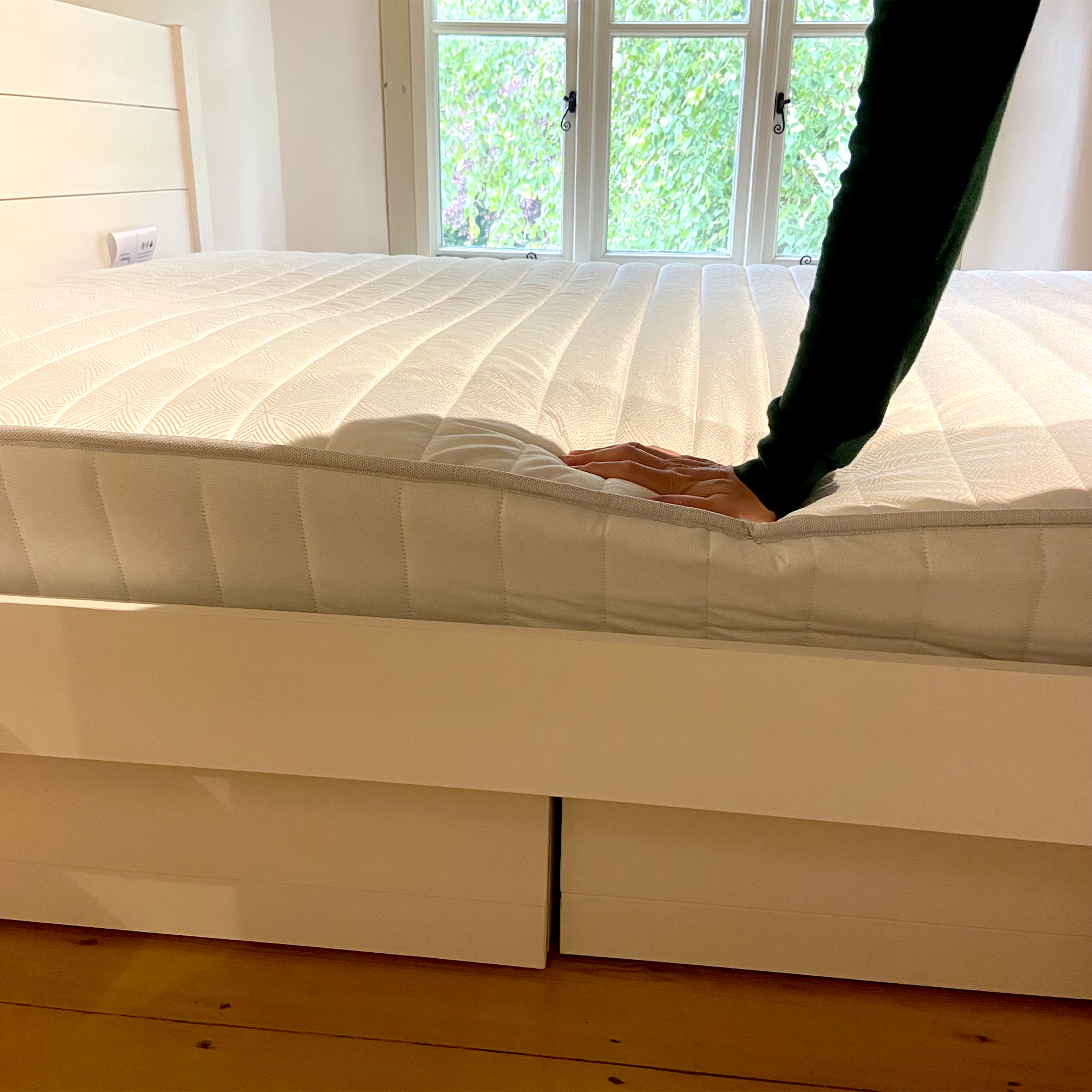
My preferred sleep position is on back or my side (which is apparently the most common type of sleep position). Typically, sprung mattresses are well-suited to back sleeping, but usually side sleepers need a more cushioned sleep surface that allows the hip and shoulder to sink further into the mattress to keep the spine well aligned. That's why the cushioning of a memory foam mattress is such a popular option for side sleepers.
However, perhaps because this mattress wasn't quite as firm as I was expecting, it felt very comfortable for me when I laid on both my back and my side – likely the medium tension springs allowed a little extra give for my shoulders and hips.
In fact, although I'm someone who only sleeps on their front very occasionally, I found this mattress offered just the right combination of support and comfort in all sleeping positions.
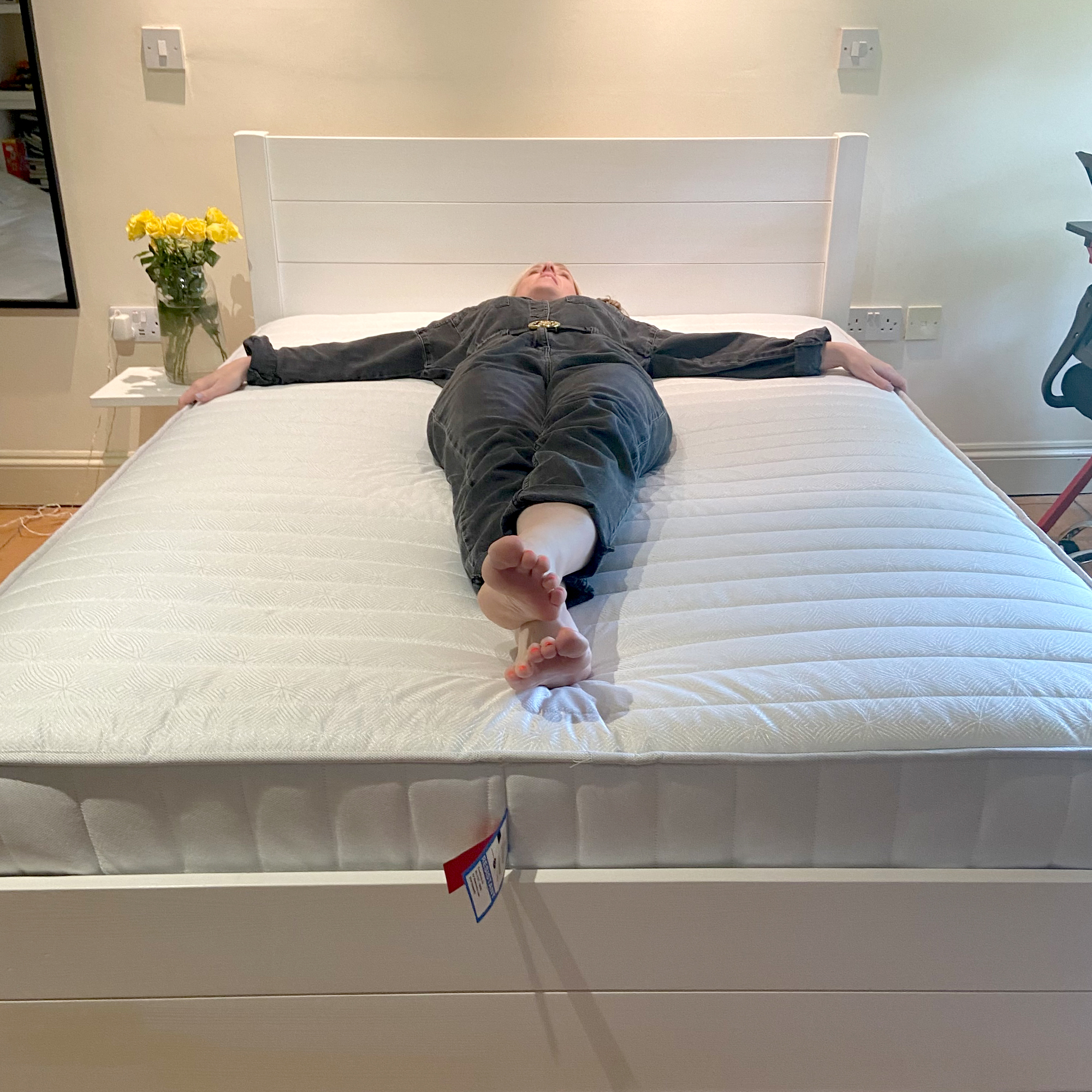
The Bonnel springs used in this mattress mean that it offers even support over the entire sleeping area, unlike a pocket spring mattress where manufacturers often adjust the height or tension of the mattress in certain areas to better support the hips or back.
Despite the lack of any zoned support, we still found this mattress comfortable with two in the bed.
Although, the weight of another adult on the mattress does cause it to sink down enough to be felt by the other person, we didn't find this was enough to cause us to roll towards each other during the night. For us, this factor wasn't significant enough to negatively impact our sleep. However, I imagine this effect might be more extreme if either of us were heavier.
Temperature regulation
Unlike many mattresses, the Follows Traditional Spring Mattress doesn’t make any special claims about its cooling or breathability features.
However, traditional spring mattresses are often far better at allowing air to circualte throughout the mattress – especially compared to dense memory foam mattresses – which is a key factor in a cooler sleep.
The comfort layer of this mattress is made from polyester wadding, which as a synthetic fibre can tend to reflect heat and humidity back towards the sleeper, but I still found this mattress a lot cooler to sleep on than my old memory foam mattress.
Over the four weeks I tested this mattress, I didn't ever find myslef too hot or overheating, even on days when the temperature reached the high twenties!
Motion transfer
The Bonnel, or open coil springs, used within the Dreams Workshop Follows Traditional Spring Mattress are generally the type of springs favoured in the most affordable sprung mattresses.
Unlike more expensive pocket spring mattreses, where the springs are individually housed in seperate fabric pockets to isolate motion transfer, open coil mattresses generally feature one continuous piece of wire which is twisted into one large coiled unit.
This open coil structure can mean that there's increased likelihood of motion transfer from one side of the mattress to the other – so if you sleep with a partner and they roll over you may feel the bounce travel through the mattress.

I share my bed with my husband, and sometimes my young children, so I was perfectly placed to test out the mattresses ability to isolate motion. And, as perhaps to be expected from the mattress's open coil construction, motion transfer is one of the areas of compromise with this affordable sleep surface.
When I was laying on the mattress with someone else I could feel their movement in the night, although it wasn’t enough to wake me up or prevent me from getting to sleep.
If either of my sons, who weigh about 5 stone each, climbed into bed, I couldn’t feel it much. However, with my 11-stone husband laying next to me the motion transfer was more significant, but still not sleep-impacting.
Edge support
Lack of edge support is perhaps the biggest problem with this mattress. This isn't so much of a problem if you sleep alone, but when sleeping in the bed with my husband I did notice that if either of us rolled too close to the edge there was a sinking sensation which made the bed feel smaller than the mattress we have with edge support.
If one of the children joins us in the night then sleeping space is at a premium, so any family with young kids may also find this a bugbear.
Sitting on the side of the mattress to put socks on in the morning I really noticed that the edges of the mattress collapsed. This could be a particular problem for anyone with mobility issues as it doesn't offer a firm surface to push off to stand up from the bed.
Plus, because this mattress is only 18cm deep (the average mattress tends to be around 25cm deep), you're already quite low down to stand up from a seated position on the edge of the mattress easily.

Third-party reviews
The Dreams Workshop Follows Traditional Spring Mattress gets rave reviews on the Dreams website, with over 3000 reviews rating it on average 4.6 out of 5 stars.
The majority of the third-party reviews that I researched were in-line with my own experience with the mattress, and praise it for being comfortable and cost-effective.
'This mattress does exactly what it says, it's comfortable and affordable' says one reviewer. Another says, that the 'service is awesome and mattress is awesome, and all done without breaking the bank'.
However, one reviewer does mention that they didn't find the mattress as firm as they might have liked, saying 'It is firm for a child, not so firm when I had to sleep in the bed with my little one, but it was very comfortable even if not firm for me'. Similarly, I would rate it a medium-firm tension rather than firm.
Another reviewer, on the Dreams website says, 'This mattress is so comfortable, and such great value!! It’s the perfect fit for our new guest bed, and we think our guests will be pleased with the comfort. Definitely recommend this mattress!'.
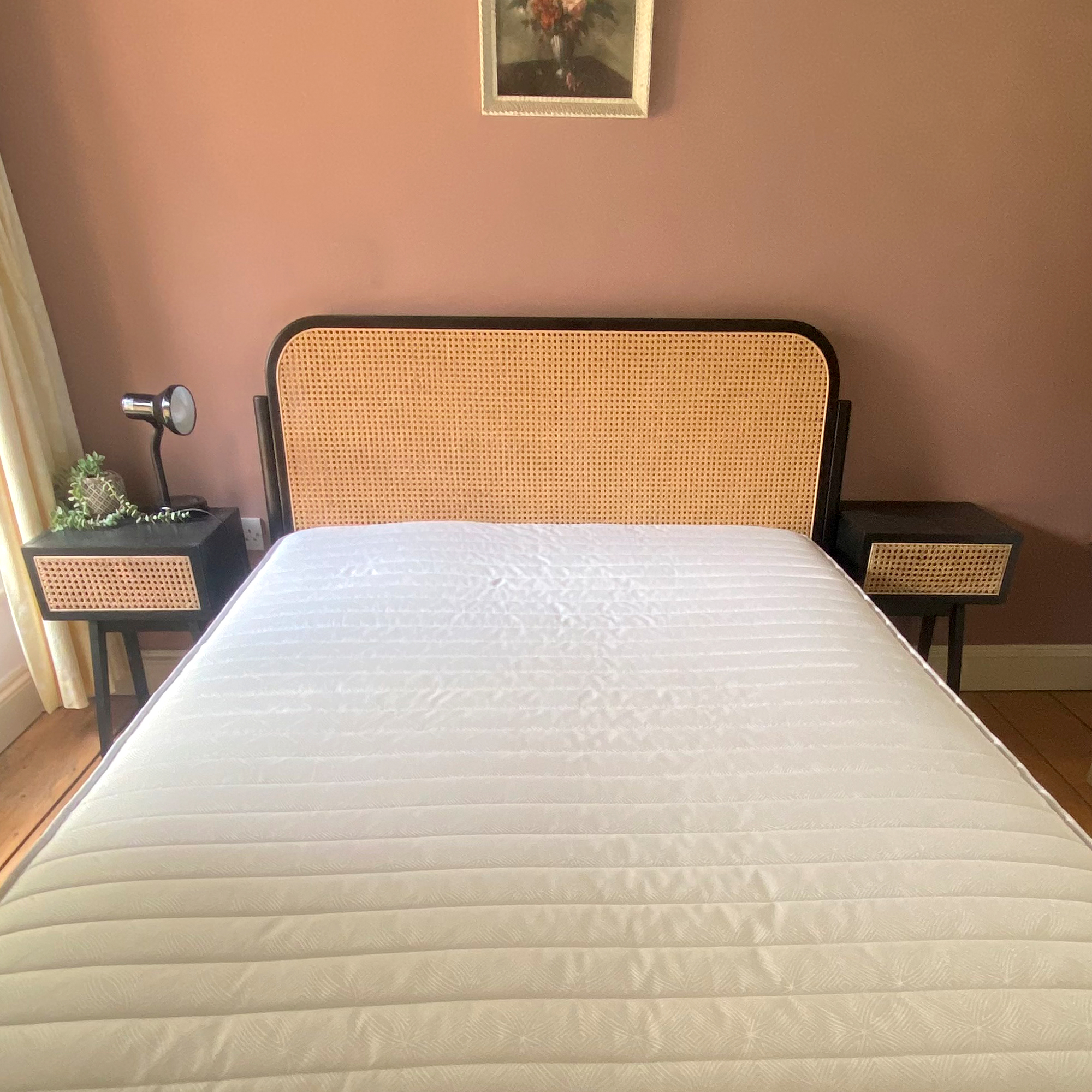
Verdict
All in all, I think I'd struggle to find another mattress that’s as comfortable and as cost-effective as the Dreams Workshop Follows Traditional Spring Mattress.
A budget-friendly option, this mattress was a positive experience from start to finish.
The delivery itself was faultless, and although the mattress doesn’t offer the firmness, motion isolation, or edge support that more expensive alternatives do, I didn't find any of these factors to have much of an impact on my overall sleep experience.
However, the lack of edge-support could be more of an issue for people with mobility issues however, as it was harder to get up from a sitting position due to the degree of sinkage at the edges.
That said, I think this low-priced mattress would be ideal for single sleepers, guest rooms, kids, and even couples looking for a mattress that won't break the bank.
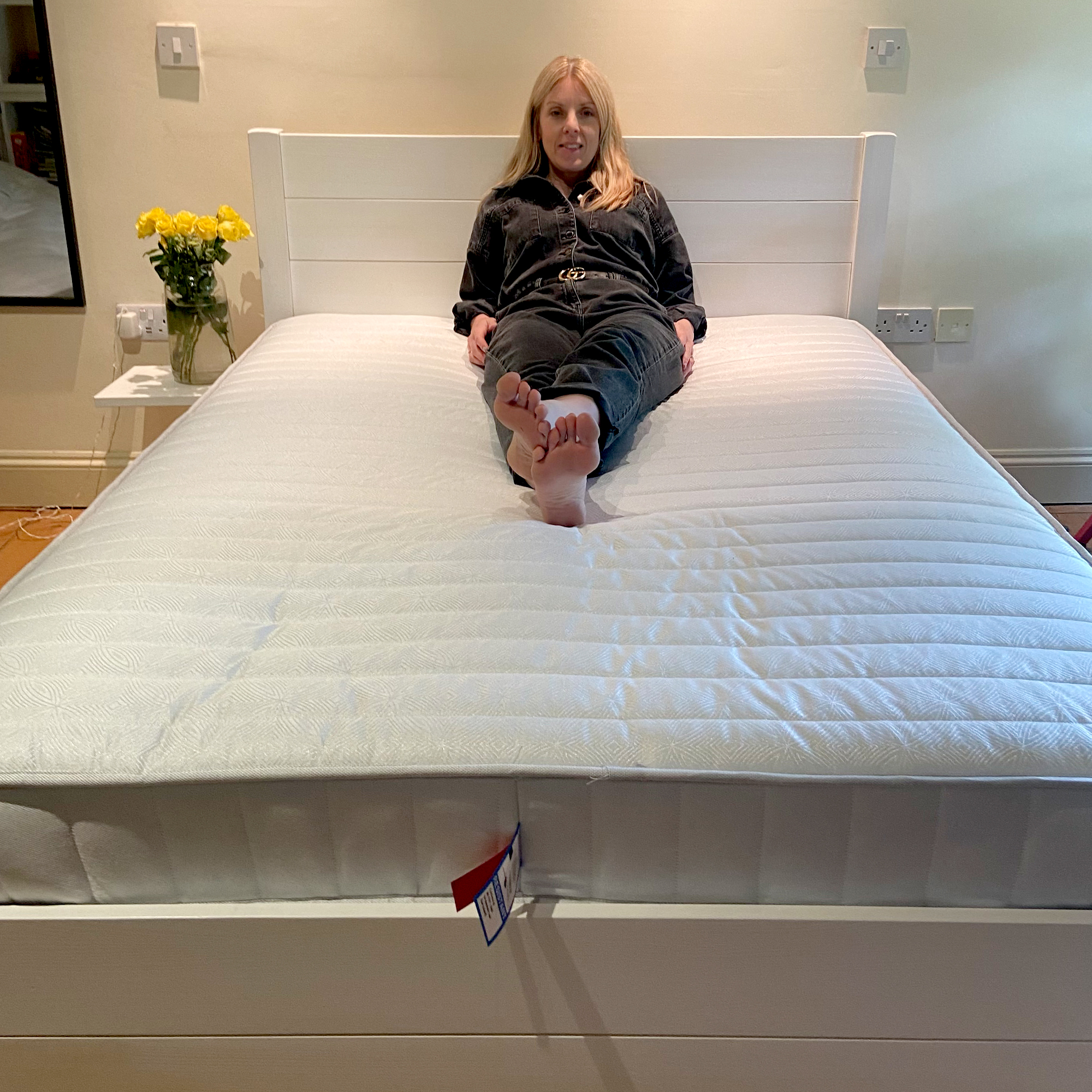
If you prefer the cushioning of memory foam then the Emma Original mattress is another budget-friendly alternative, and one that offers better motion isolation thanks to its all-foam construction. However, I like the responsiveness of a sprung mattress, and I tend to overheat on a memory foam sleep surface, so, for me, the Dreams mattress' breathable open coil springs are a bonus.
After testing multiple mattresses, we still consider the Simba Hybrid Original mattress one of the best-in-class when it comes to its winning combination of performance and value for money – and the Simba Hybrid definitely offers better cushioning, support, motion isolation and edge support than the Dreams Workshop Follows Traditional Spring Mattress.
However, Simba's bestseller is also twice the price, so if you're looking for a mattress that is practical and does the job without breaking the bank, I think the Dreams Workshop Follows Traditional Spring Mattress is a great option to consider.

After graduating with a BA Hons in English Literature from The University of Leicester, in 2002 Rachel Tompkins studied for a Postgraduate Diploma in Periodical Journalism at City University, London. She began her journalism career as a staff writer on women’s weekly magazines before leaving her Features Director role to go freelance after having her son in 2012. Now the mother-of-two lives in Oxfordshire and writes in a freelance capacity across a range of national newspapers and magazines.